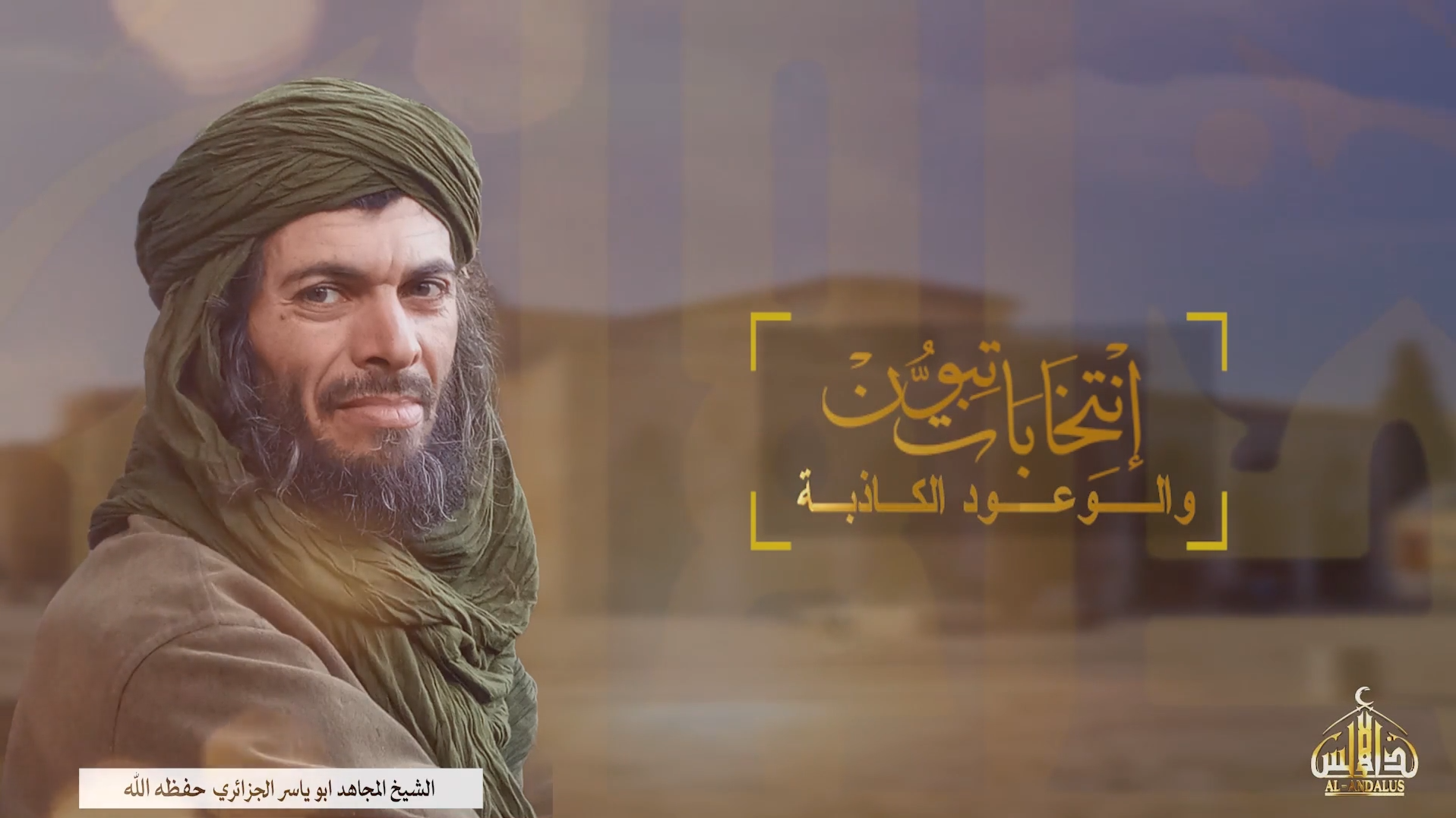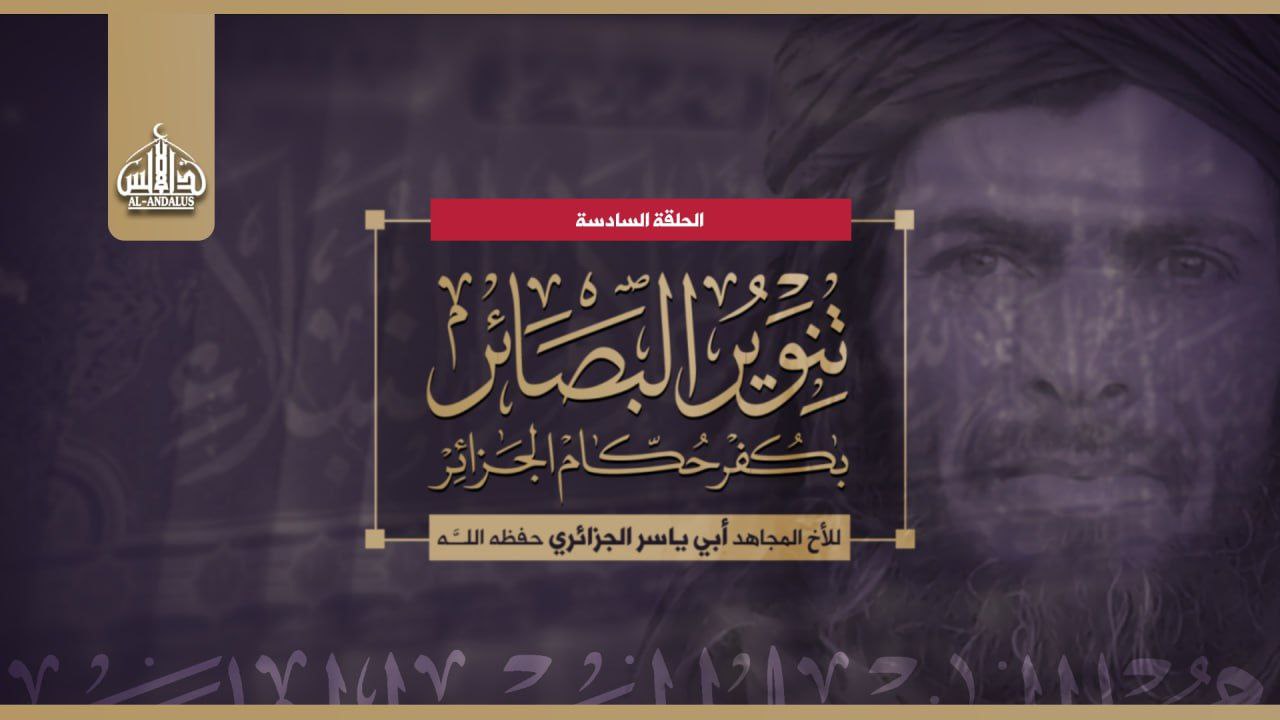UPDATE: 09/03/2024 2:42PM: Here is an English translation of the below release:
Abū Yāsir al-Jazā’irī — Tebboune’s Elections and the Lying Promise (En)
—

Video:
Arabic Transcription:
Abū Yāsir al-Jazā’irī — Tebboune’s Elections and the Lying Promise (Ar)
_________________
Source: Telegram
To inquire about a translation for this video message for a fee email: [email protected]









